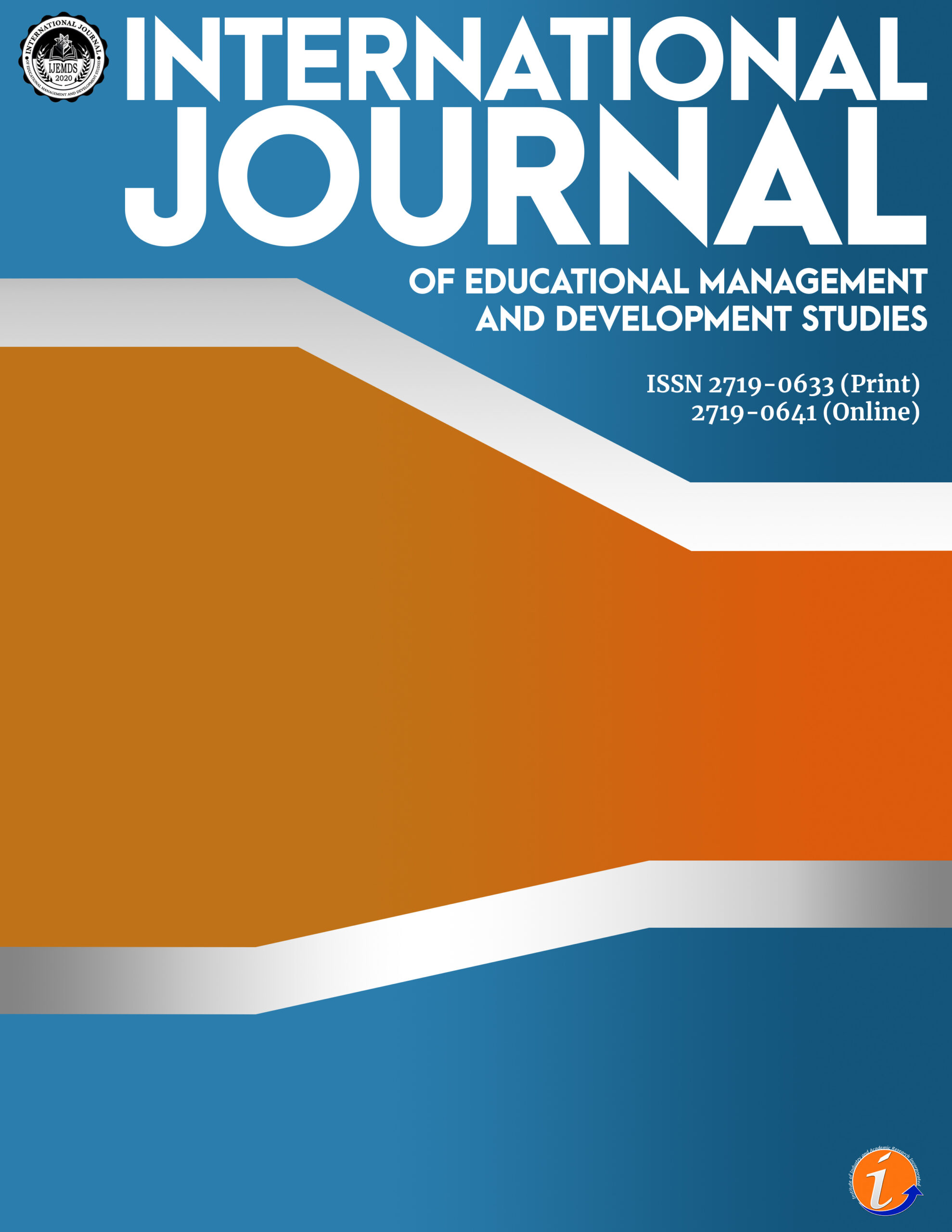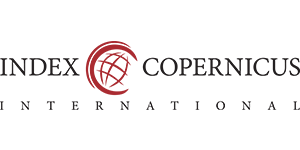While the success of schools is often attributed to the efforts of principals, it is important to determine how schools can embrace distributed instructional leadership to enhance academic performance among learners. It is evident that instructional leadership alone is inadequate and necessitates complementation with a distributed leadership model. This study exclusively focuses on how instructional leadership aligns with distributed leadership, paying special attention to distributed instructional leadership implementation in primary schools in Zimbabwe. In this particular qualitative study, the interpretivist theory served as the guiding framework. The study involved observation and conducting interviews with school teachers and principals to gain insight into the instructional and distributive leadership activities that were taking place within their respective schools. The analysis of the data was approached through the lens of Hallinger and Murphy’s model of instructional leadership. The findings of the study highlighted the importance of active involvement from all members within a school for effective leadership. Furthermore, it was revealed that a holistic approach to school leadership styles is essential, emphasizing the interconnected nature of instructional and distributive leadership activities (distributed instructional leadership). The study ultimately determined that distributed instructional leadership is achieved through collaborative efforts in formulating school visions and embracing shared supervision practices among the members of staff. It was also identified that creating opportunities for staff development in the schools plays a pivotal role in reaching the goals of distributed instructional leadership.
distributed leadership, instructional leadership, school vision, shared responsibility, staff development
John Tenha. PhD in Educational Management, Lecturer, Zimbabwe Open University.
Chipo Makamure. Corresponding author. PhD Curriculum Studies - Mathematics Education, Lecturer, Zimbabwe Open University. Email: makamurech@zou.ac.zw
No potential conflict of interest was reported by the author(s).
This work was not supported by any funding.
This study was self-funded. However, we would like to acknowledge teachers and school principals who cooperated in providing data for the study to be a success. We have no declarations for conflict of interest.
Ahlström, B., & Aas, M. (2020). Leadership in low- and underperforming schools—two contrasting Scandinavian cases. International Journal of Leadership in Education, 27(1), 157–178. https://doi.org/10.1080/13603124.2020.1849810
Alam, A. & Ahmad, M. (2017). The impact of instructional leadership, professional communities and extra responsibilities for teachers on student achievement. International Journal of Educational Management, 31(3), 383-395. https://doi.org/10.1108/IJEM-09-2015-0126
Alhouti, I. & Male, T. (2017). Kuwait principals: Preparation, induction and continuing development. International Studies in Educational Administration, 45(1), 88-104.
Aunga, D. A. O. & Masare, O. (2017). Effect of leadership styles on teacher’s performance in primary schools of Arusha District Tanzania. International Journal of Educational Policy Research and Review, 4(4), 42-45. https://doi.org/10.15739/IJEPRR.17.006
Azar, A. S., & Adnan, E. J. (2020). The impact of effective educational leadership on school students’ performance in Malaysia. Education Quarterly Reviews, 3(2), 3-9. https://doi.org/10.31014/aior.1993.03.02.127
Aziz, N., Muda, M. S. B., Mansor, N. R., & Ibrahim, M. Y. (2017). Literature review on instructional leadership practice among principals in managing changes. International Journal of Academic Research in Business and Social Sciences, 7(12), 18-24. http://dx.doi.org/10.6007/IJARBSS/v7-i12/3588
Bennett, N., Wise, C., Woods, P., & Harvey, J. A. (2003). Distributed leadership: A review of literature. England. National College for School Leadership.
Beverborg, A. O. G., Sleegers, P. J. C., & Klaas, V. V. (2015). Fostering teacher learning in VET colleges: Do leadership and teamwork matter? Teaching and Teacher Education. 48, 22-33. https://doi.org/10.1016/j.tate.2015.01.015
Bhengu, T. T. & Mkhize, B. N. (2013). Principals’ instructional leadership practices in improving learner achievement: Case studies of five secondary schools in the Umbumbulu area. Education as change, 17(S1), 33-47. https://doi.org/10.1080/16823206.2014.865989
Bolden, R. (2011). Distributed leadership in organizations: A review of theory and research. International Journal of Management Reviews, 13, 251-269. https://doi.org/10.1111/j.1468-2370.2011.00306.x
Brandon, J., Hollweckb, T., Donlevya, J. K., & Whalen, C. (2018). Teacher supervision and evaluation challenges: Canadian perspectives on overall instructional leadership. Teachers and Teaching: Theory and Practice, 24(3), 263–280. https://doi.org/10.1080/13540602.2018.1425678
Burkett, J. & Hayes, S.D. (2023). Ineffective school leadership: Teachers weigh-in. School Leadership Review, 18(1), 7. https://scholarworks.sfasu.edu/slr/vol18/iss1/7
Camburn, E., Rowan, B., & Taylor, J. (2003). Distributed leadership in schools: The case of elementary schools adopting comprehensive school reform models. Educational Evaluation and Policy Analysis, 25(4), 347-373. https://doi.org/10.3102/01623737025004347
Cansoy, R., Ali Çağatay Kılınç A. C. & Türkoğlu, M.E. (2024). Barriers to school principals’ effective instructional supervision practices: evidence from a centralised educational context. Educational Studies, 1-18. https://doi.org/10.1080/03055698.2024.2322942
Cansoy, R., Parlar, H., & Polatcan, M. (2020). Collective teacher efficacy as a mediator in the relationship between instructional leadership and teacher commitment. International Journal of Leadership in Education, 25(6), 900–918. https://doi.org/10.1080/13603124.2019.1708470
Chan, T. C., Jiang, B., Chandler, M., Morris, R., Rebisz, S., Turan, S., Shu, Z., & Kpeglo, S. (2019). School principals’ self-perceptions of their roles and responsibilities in six countries New Waves. Educational Research & Development, 22(2), 37–61. https://doi.org/10.3102/1427273
Charles, A., & Mkulu, D. G. (2020). Management challenges facing school administrators and pupils’ academic performance in public primary schools in Sengerema District Mwanza, Tanzania. International Journal of Humanities and Education Development (IJHED), 2(3), 191 207. https://doi.org/10.22161/
Chukwueze, A. C. (2021). Influence of staff development on teachers’ job performance in Abia state public secondary schools. Journal of Educational Research and Development, 4(1), 215-222.
Creswell, J. W. & Creswell, J. D. (2018), Research design: qualitative, quantitative, and mixed methods approaches, (5th ed.). London: SAGE Publications Ltd.
Cruickshank, V. (2017). The influence of school leadership on student outcomes. Open Journal of Social Sciences, 5(9), 115-123. https://doi.org/10.4236/jss.2017.59009
Davis, F. & Boudreaux, M. K. (2019). Teacher leaders’ perceptions of Charter School Principals’ Instructional Leadership Practices. Journal of Educational Research and Practice, 9(1), 89-103. https://doi.org/10.5590/JERAP.2019.09.1.07
Dishena, R. & Mokoena, S. (2016). Novice teachers’ experiences of induction in selected primary schools in Namibia. Eurasian Journal of Educational Research, (66), 335-354. http://dx.doi.org/10.14689/ejer.2016.66.19
Dong, N. T. & Seong, D. N. F. (2014). Applying the Rasch Model to investigate Singapore principals’ instructional leadership practices. Leading and Managing, 20(2), 1-26.
Fessehatsion, P. W. (2017). School principal’s role in facilitating change in teaching-learning process: Teachers’ attitude. A case study on five junior schools in Asmara, Eritrea. Journal of Education and Practice, 8(6), 134-142.
Gambiza C. (2021). School factors contributing to ZIMSEC pass rate: A case of Tapiwa Primary School, Gweru District, Zimbabwe. Journal of Research Innovation and Implications in Education, 5(4), 36 – 46.
Getahun. T., Tefera, B. F., & Burichew, A. H. (2016). Teacher’s job satisfaction and its relationship with organizational commitment in Ethiopian primary schools: Focus on primary schools of Bonga town. European Scientific Journal, 12(13), 380-401. http://dx.doi.org/10.19044/esj.2016.v12n13p380
Ghavifekr, S. & Ibrahim, M. S. (2014). Head of departments’ instructional supervisory role and teachers’ job performance: Teachers’ perceptions. Asian Journal of Social Sciences and Management Studies, 1(2), 45-56.
Göksoy, S. (2015). Distributed leadership in educational institutions. Journal of Education and Training Studies, 3(4), 110-118.
Hairon, S. (2017). Teacher leadership in Singapore: The next wave of effective leadership. Research in Educational Administration and Leadership, 2(2), 170-194. https://doi.org/10.30828/real/2017.2.3
Hairon, S. & Goh, J. W. P. (2015). Pursuing the elusive construct of distributed leadership: Is the search over? Educational Management Administration and Leadership, 43(5), 693-718. https://doi.org/10.1177/1741143214535745
Hallinger, P. (2011). Leadership for learning: Lessons from 40 years of empirical research. Journal of Educational Administration, 49(2), 124-142. https://doi.org/10.1108/09578231111116699
Hallinger, P. & Murphy, J. (1985). Assessing the instructional management behaviour of principals. The Elementary School Journal. 86, 217-247. https://doi.org/10.1086/461445
Hallinger, P. & Murphy, J. F. (2012). Running on empty? Finding the time and capacity to lead learning. NASSP Bulletin. 97, 5-21. https://doi.org/10.1177/0192636512469288
Hallinger, P. & Wang, W.C. (2015). Assessing instructional leadership with the principal instructional management rating scale. Dordrecht, Netherlands: Springer.
Hallinger, P., Wang, W., & Chen, C. (2013). Assessing the measurement properties of the Principal Instructional Management Rating Scale: A meta-analysis of reliability studies. Educational Administration Quarterly, 49(2), 272-309. https://doi.org/10.1177/0013161X1246814
Heaton, T.L. (2016). Handbook of instructional leadership. http://digitalcommons.cedarville.edu/education_presentations/280
Heck, R. H. & Hallinger, P. (2010). Testing a longitudinal model of distributed leadership effects on school improvement. The Leadership Quarterly, 21. 867-885. https://doi.org/10.1016/j.leaqua.2010.07.013
Ihekoronye, E. O. (2020). Conducive school environment: A necessary factor for effective teaching and learning in public secondary schools in Gwagwalada area council of Abuja. Benue State University Journal of Educational Management, 2(1), 203-213.
Jita, L.C. (2010). Instructional leadership for the improvement of science and mathematics in South Africa. Procedia–Social and Behavioral Sciences, 9(2), 851-854. https://doi.org/10.1016/j.sbspro.2010.12.247
Kaso, N., Aswar, N., Firman, F., & Ilham, D. (2019). The relationship between principal leadership and teacher performance with student characteristics based on local culture in senior high schools. Kontigensi: Jurnal Ilmiah Manajemen, 7(2), 87-98. https://doi.org/10.56457/jimk.v7i2.129
Klar, H.W. (2016). Fostering department chair instructional leadership capacity: laying the groundwork for distributed instructional leadership. Instructional Journal of Leadership in Education: Theory and Practice, 15(2), 175-197. https://doi.org/10.1080/13603124.2011.577910
Kosgei, K.K. (2015). Challenges facing staff development and training: A survey of secondary schools in Kericho County. International Journal of Humanities and Social Science Invention, 4(2), 34-47.
Magnate, F.R. (2023). Exploring the mediating role on distributive and instructional leadership of teacher organizational satisfaction to commitment: A structural equation model. Journal for Educators, Teachers and Trainers, 14(5). 406-418. https://doi.org/10.47750/jett.2023.14.05.036
Mapolisa, T. & Tshabalala, T. (2014). Perceptions of teachers on causes of poor performance of pupils at ordinary level public examinations in Zimbabwean Rural Secondary Schools: A case study of Nkayi District. International Journal of Innovation and Applied Studies, 8(1), 158-167.
Marongedza, L., Hlungwani, P. M., & Hove, P. (2022). Institutional constraints affecting secondary school student performance: A case study of rural communities in Zimbabwe. Cogent Education, 10(1). https://doi.org/10.1080/2331186X.2022.2163552
Martin, M. E. (2018). Qualities of instructional leadership among principals in high-performing Christian schools. Journal of Research on Christian Education, 27(2), 157-182. https://doi.org/10.1080/10656219.2018.1500501
Masuku, S. (2011). The instructional leadership role of the high school head in creating a culture of teaching and learning in Zimbabwe. Theses and Dissertations. http://hdl.handle.net/10500/7741
Mombourquette, C. (2017). The role of vision in effective school leadership. International Studies in Educational Administration, 45(1), 16-36.
Moyo, W. & Maseko, T. (2016). Factors influencing poor performance of learners in the grade seven examinations: A case of Umguza District, International Journal of Academic Research in Business and Social Sciences, 6(1). https://dx.doi.org/10.6007/IJARBSS/v6-i1/1992
Mupfumira, E.B. (2023). Re-imagining education in Zimbabwe – a collaborative effort. Unicef. https://www.unicef.org/zimbabwe/stories/re-imagining-education-zimbabwe-collaborative-effort
Muranda, A.M. (2015). An examination of the influence of leadership in the achievement of goals and objectives in secondary schools in Chikomba district. IOSR Journal of Research & Method in Education, 5(5), 15-20.
Niqab, M., Sharma, S., Wei, L.M., & Maulod, S.B.A. (2014). Instructional leadership potential among school principals in Pakistan. International Education Studies, 7(6), 74–85. https://doi.org/10.5539/ies.v7n6p74
Otoum, F.A.S. (2021). Influence of teachers’ job satisfaction on student academic performance: A case study of teachers in Jerash Governorate. Elementary Education Online, 20(5), 5294-5301. https://doi.org/10.17051/ilkonline.2021.05.593
Ricard, N.C. & Pelletier, L.G. (2016). Dropping out of high school: The role of parent and teacher self-determination support, reciprocal friendships, and academic motivation. Contemporary Educational Psychology, 44(45), 32-40. https://doi.org/10.1016/j.cedpsych.2015.12.003
Shava, G.N. & Tlou, F.N. (2018). Distributed leadership in education, contemporary issues in educational leadership. African Educational Research Journal, 6(4): 279-287. https://doi.org/10.30918/AERJ.64.18.097
Si-Rajab, S.B., Madya, P. & Musa, K.B. (2019). The level of instructional leadership practices among principals of national religious secondary school in Malaysia. International Journal of Scientific Research and Management (IJSRM), 7(3), 927-939. https://doi.org/10.18535/ijsrm/v7i3.el03
Şişman, M. (2016). Factors related to instructional leadership perception and effect of instructional leadership on organizational variables: A meta-analysis. Educational Sciences Theory and Practice, 16(5), 1761–1787. https://doi.org/10.12738/estp.2016.5.0172
Sleegers, P.J.C., Thoonen E.E.J., Oort F.J. & Peetsma, T.T.D. (2014). Changing classroom practices: the role of school-wide capacity for sustainable improvement. Journal of Educational Administration, 52(5), 617- 652. https://doi.org/10.1108/JEA-11-2013-0126
Spillane, J.P. (2005). Distributed leadership. The Educational Forum, 69, 143-150. https://doi.org/10.1080/00131720508984678
Spillane, J.P. & Diamond, J.B. (2007). Distributed leadership in practice. USA: Hawker Brownlow Education.
Spillane, J.P. & Diamond, J.B. (2007b). Taking a distributed perspective. In J. P. Spillane, and J. B. Diamond (Eds.), Distributed Leadership in Practice. New York: Teachers College Press. 1-15.
Spillane, J.P. & Healey, K. (2010). Conceptualizing school leadership and management from a distributed perspective: An exploration of some study operations and measures. The Elementary School Journal, 3(2), 253-281. https://doi.org/10.1086/656300
Subarto, S., Solihin, D., & Qurbani, D. (2021). Determinants of job satisfaction and its implications for the lecturers’ performance. Jurnal Pendidikan Ekonomi Dan Basins (JPEB), 9(2), 163-178. https://doi.org/10.21009/JPEB.009.2.7
Tian, M. & Risku, M. (2019). A distributed leadership perspective on the Finnish curriculum reform 2014. Journal of Curriculum Studies, 51(2), 229-244. https://doi.org/10.1080/00220272.2018.1499806
Timperley, H.S. (2005). Distributed leadership: Developing theory from practice. Journal of Curriculum Studies, 37, 395-420. https://doi.org/10.1080/00220270500038545
Yangaiya, S.A. & Ali, H.M. (2013). Influence of distributed leadership on school effectiveness. International Journal of Management, IT and Engineering, 3(3), 129-140.
Yunas, M. & Iqbal, M. (2013). Dimensions of instructional leadership role of principal. Interdisciplinary Journal of Contemporary Research in Business, 4(10), 629-637.
Cite this article:
Tenha, J. & Makamure, C. (2024). A contemporary examination of instructional leadership activities and distributed leadership practices in elementary education. International Journal of Educational Management and Development Studies, 5(3), 267-295. https://doi.org/10.53378/ijemds.353105
License:
![]()
This work is licensed under a Creative Commons Attribution (CC BY 4.0) International License.










